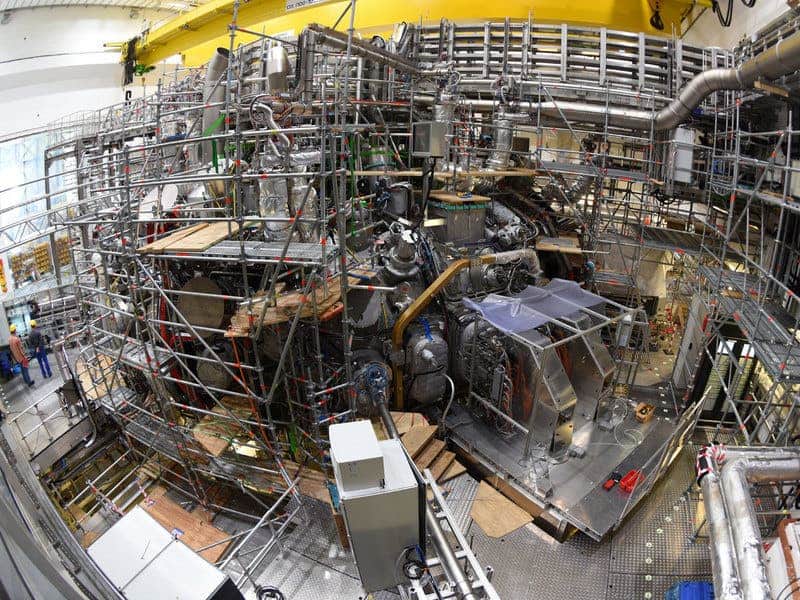The Wendelstein 7-X will start firing up helium plasma in December and hydrogen plasma in January 2016, the Max Planck Institute for Plasma Physics announced. That may not seem like much, but it’s quite exciting when you think that machines like this one could revolutionize energy production.

Photo: IPP, Tino Schulz
The 425 tonne installation took 1.1 million construction hours spread over nine years, but it’s definitely worth it; one by one, all the individual systems have been tested and passed with flying colors – so it’s time to put this whole thing into motion.
Why this matters
The key to fusion is to create ungodly high temperatures up to 180 million degrees Fahrenheit (100 million Celsius) and generate, confine, and control a blob of gas called plasma. At these incredibly high temperatures, the very structure of the atom changes, and the electrons are ripped from the outer shells, leaving positive ions. Normally, these ions would just bounce off each other, but under these conditions, they can merge together, creating new atoms, and – BAM – you have nuclear fusion. Nuclear fusion shouldn’t be mistaken for the nuclear energy we are using at the moment, which generate energy from decaying atoms, not atoms that fuse together.
Nuclear fusion is not an unfamiliar process though; it’s the process that fuels the Sun, so we know it can be done; however, doing it in a way that can be used economically has not yet been achieved, and even research-focused machines are sparse. This is where W7-X enters the stage – it can generate massive amounts of clean, renewable energy.
“The objective of fusion research is to develop a power plant favourable to the climate and environment that derives energy from the fusion of atomic nuclei just as the sun and the stars do,” the press release from Max Planck reads, and it certainly has the potential.
The heating system includes 10 megawatts of microwaves, for up to 10 seconds, and can deliver 1 megawatt for 50 seconds during operational phase 1 (OP-1). The initial runs from December and January will only test the feasibility of the reactor type. If it is successful, then it can serve as a blueprint for a demo fusion plant – but that’s a pretty big if.






